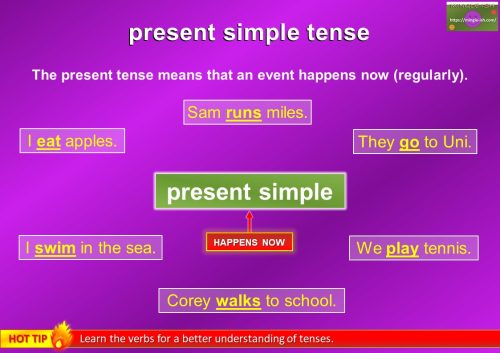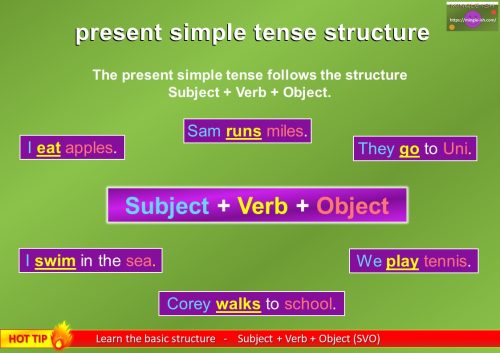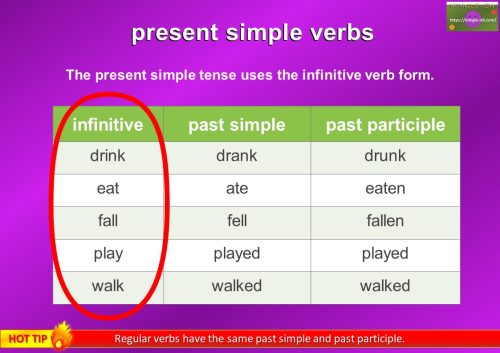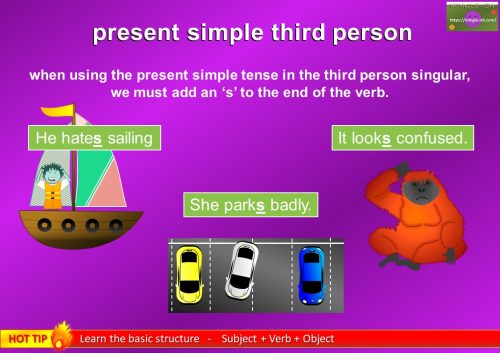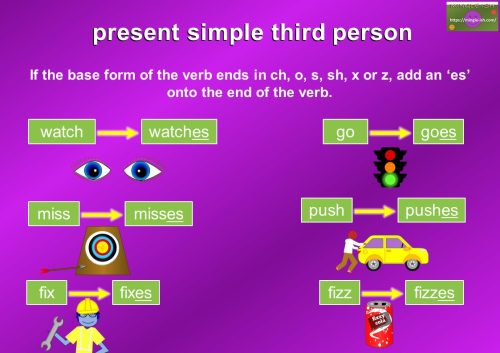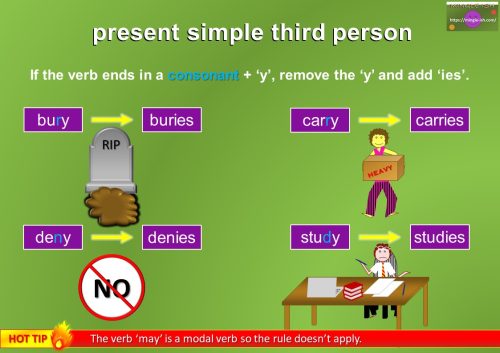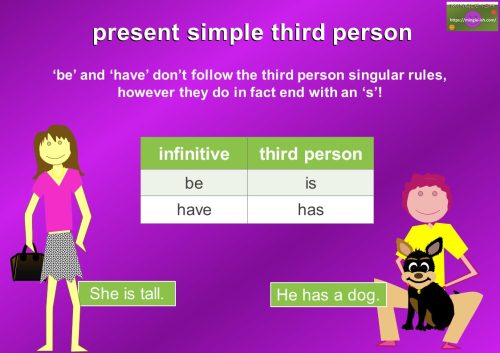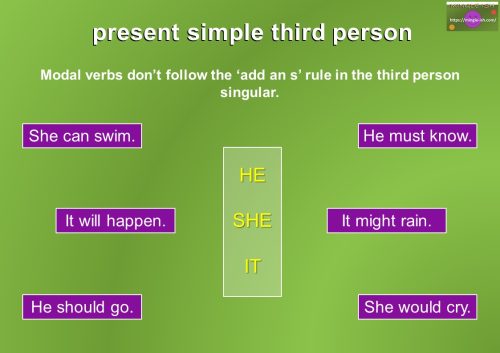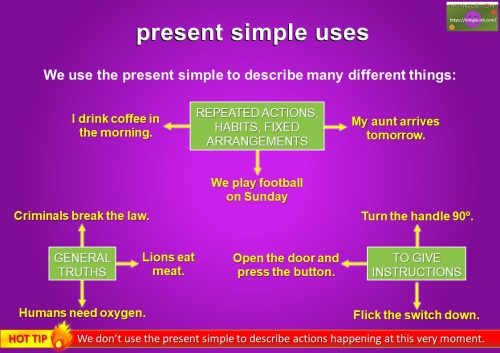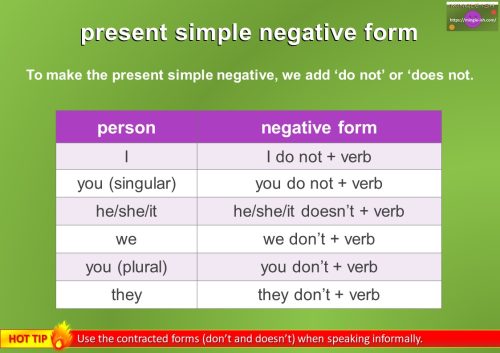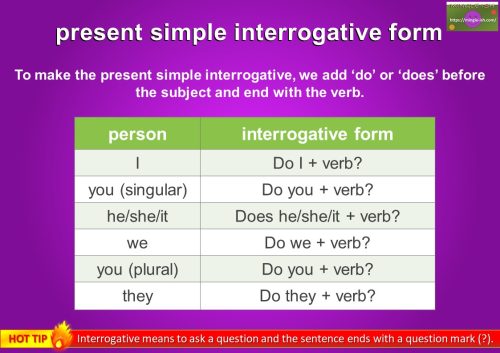There are 3 tenses to understand:
- past
- present
- future
The present tense means that an event happens now. This doesn’t necessarily mean it’s happening at this exact moment, but it happens regularly, to this day. It describes a routine. If you are describing your morning routine, you are using the present simple (or simple present in American English).
For example: I wake up, I get up, I make a coffee, I have a shower, I get dressed then I go to work. This is all the simple present tense (and are often used with adverbs of frequency).
present simple tense structure
The structure of the present simple tense is Subject + Verb + Object. The verb used in this structure is the infinitive (base form, first column). For example:
- I like apples.
- We share everything.
- Dad takes me.
present simple rules (the third person)
There is a rule when using the present simple tense in the third person (he/she/it). We must add an ‘s’ to the end of the verb. For example:
- He plays golf.
- She eats pizza.
- It likes carrots.
There are however exceptions to this rule.
- If the base form of the verb ends in ch, o, s, sh, x or z, add an ‘es’ onto the end of the verb.
- If the verb ends in a ‘y’, remove the ‘y’ and add ‘ies’.
- There are two irregular verbs that don’t follow this rule. They are ‘be’ and ‘have’. Their forms in the third person are: be – is and have – has. (they do in fact end with an ‘s’).
- If you are using a modal verb, they don’t follow this rule.
present simple uses and examples
So, when do we use the present simple tense, I hear you ask? Well, there are a few uses for this tense:
For general truths:
- The sun rises in the east.
- He comes from India.
For repeated actions, habits, and fixed arrangements
- We walk to school.
- She brushes her teeth before bed.
- College begins in September.
For instructions
- Turn left at the bridge then walk for 100 meters.
- Pour in the sauce and stir until thickened.
present simple negative form
Next, it’s time to make the present simple negative. We do this by adding the words ‘do not’ or ‘does not’ (third person singular) after the subject. Let’s take a look at an example using the verb ‘to eat’:
- I do not (don’t) eat.
- You do not eat.
- He/she/it does not (doesn’t) eat.
- We do not eat.
- You (plural) do not eat.
- They do not eat.
HOT TIP – In common speech, we use the contracted forms: don’t and doesn’t. Contractions sounds more natural and are how natives speak.
Interrogative sentence
We can also use the present tense to make interrogative sentences. This means to ask someone a question. We do this by adding ‘do’ or ‘does’ (third person singular) before the subject and ending with the object. Look at this example with the verb ‘to know’:
- Do I know the answer?
- Do you (singular) know the answer?
- Does he/she/it know the answer?
- Do you (plural) know the answer?
- Do we know the answer?
- Do they know the answer?
HOT TIP – A question always ends with a question mark(?). A question mark is one of the many different punctuation marks we have in English.
Finding tense structures difficult? Why not try a course or English classes, here are some of the best ones around.
